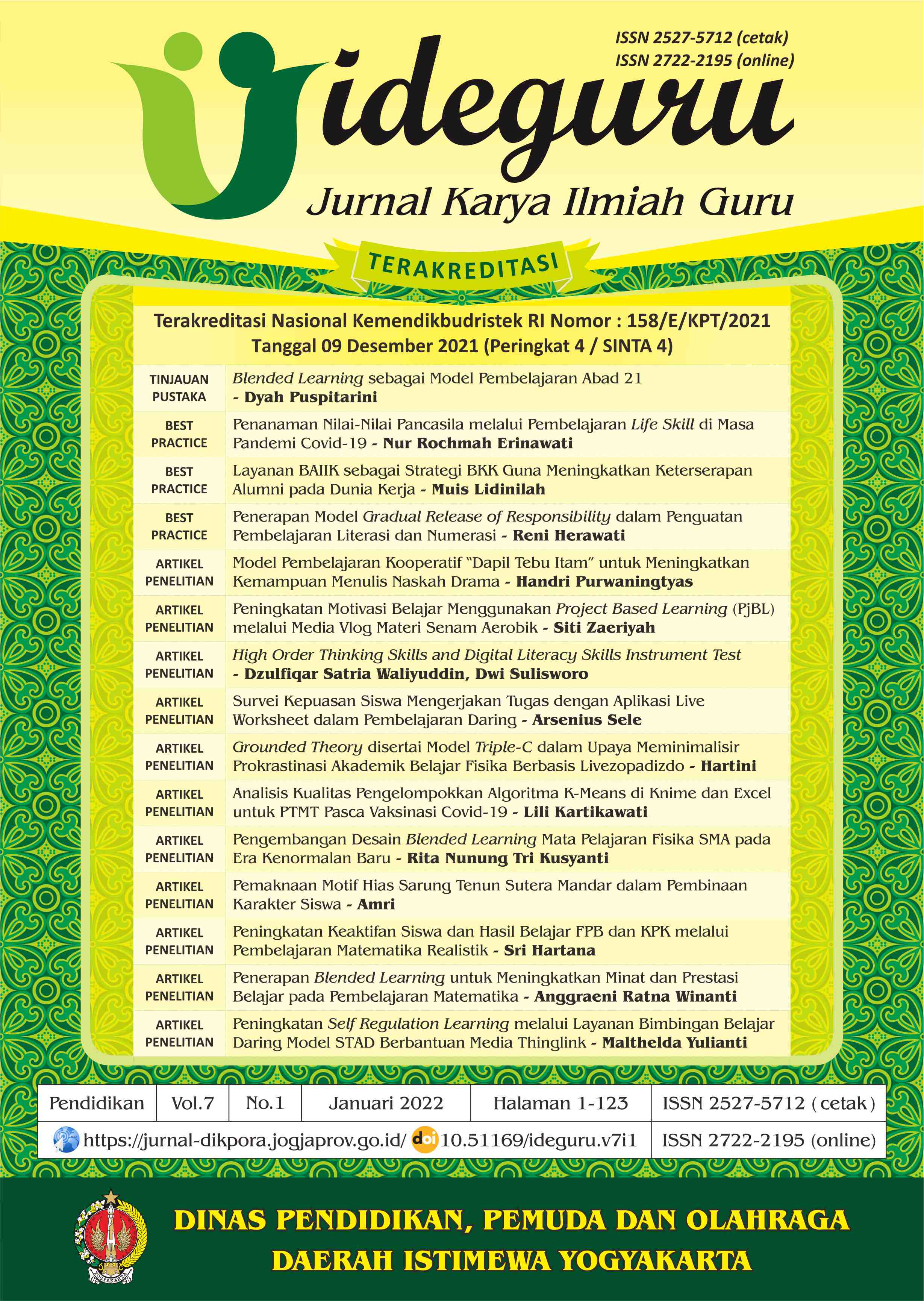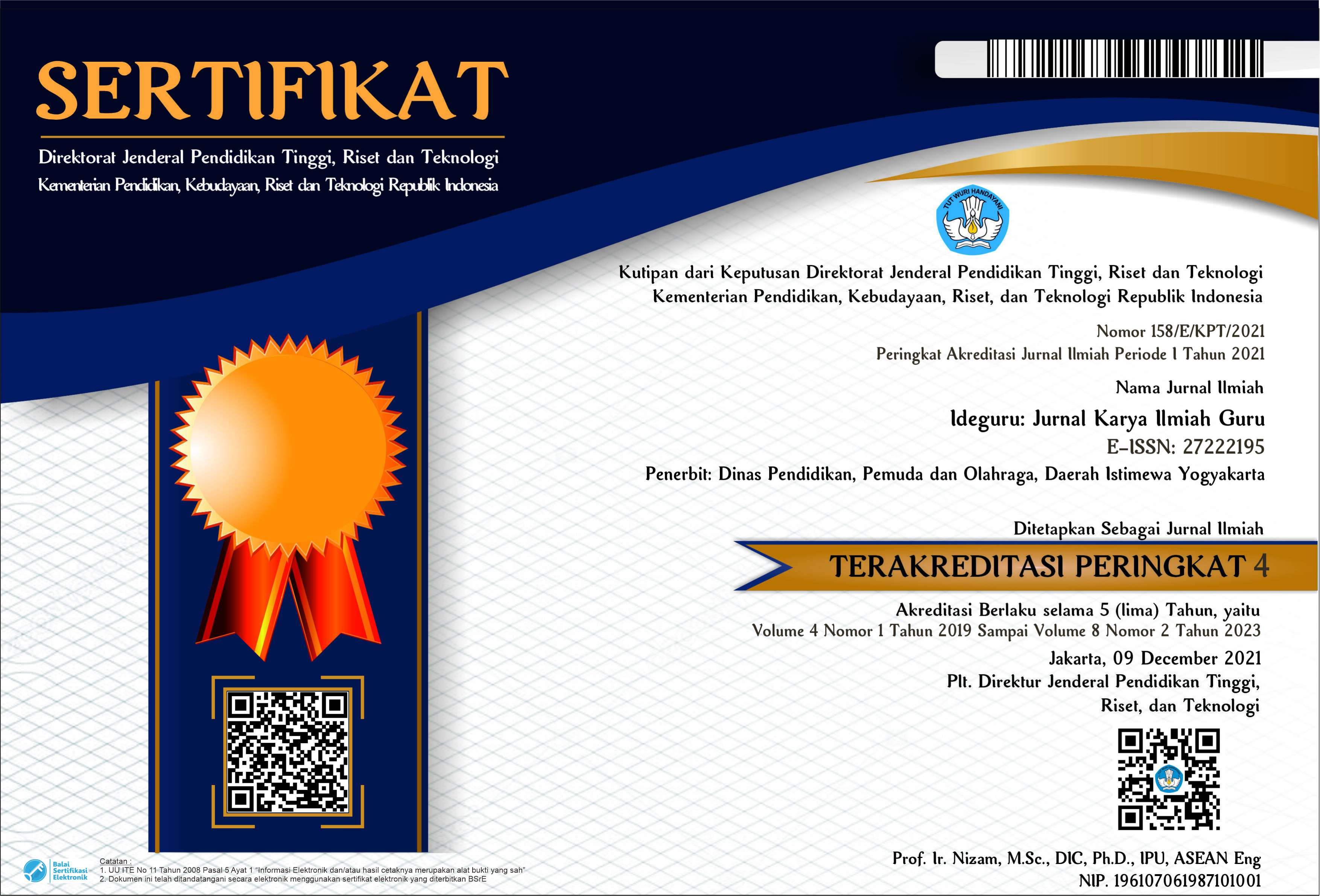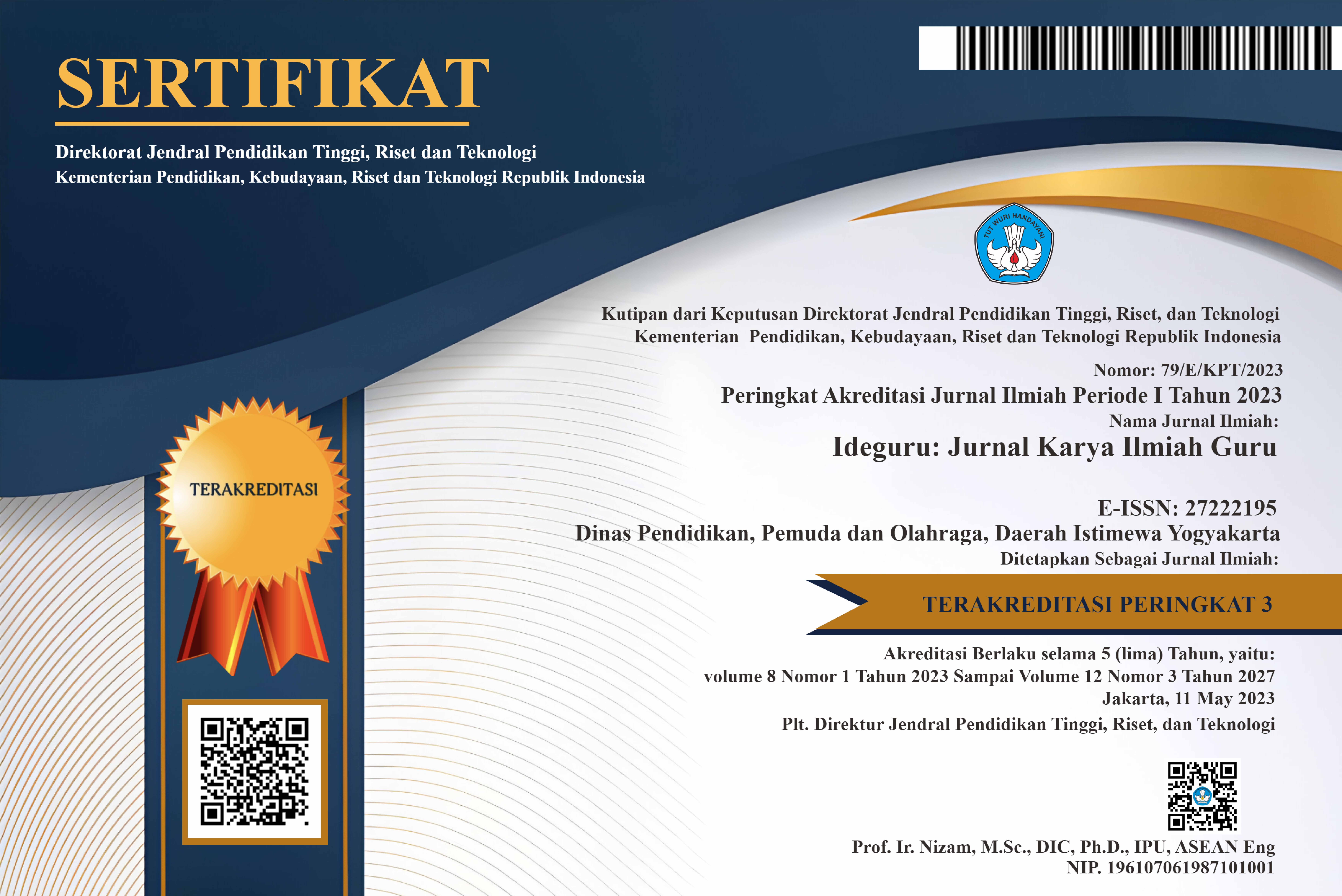The Implementation of the Gradual Release of Responsibility Model in Strengthening Literacy and Numeracy Learning
Abstract
This best practice article aimed to analyze and evaluate mentoring with the Gradual Release of Responsibility model for teachers in strengthening literacy and numeracy learning. The mentoring involved six selected senior high schools in Yogyakarta based on the urgency of strengthening literacy and numeracy learning. The Gradual Release of Responsibility model actualized the release of responsibility in stages: 1) Focused Lesson, 2) Guided Instruction, 3) Collaborative Learning, and 4) Individual Work. The data analysis showed teachers' understanding of literacy in learning, from 56% to 69%. Meanwhile, teachers' understanding of numeracy in learning crawled from 36% to 61%, increasing 25%. Teachers' skills in planning literacy learning increased by 15%, from 70% to 85%. Teachers' skills in planning for numeracy lessons experienced a sharp increase of 35%, from 38% to 75%. It could be inferred that mentoring with the Gradual Release of Responsibility model had a significant impact, although it did not achieve optimal results. There were some obstacles related to the same time as vaccine completion activities for teachers and students. The limited literature on implementing the Gradual Release of Responsibility model in school supervision put the findings a new insight and a novelty both at the level of practice and research. Furthermore, it is recommended for supervisors and schools to adopt the Gradual Release of Responsibility model for both teacher and student guidance in improving literacy and numeracy skills.
PDF Downloads
Copyright (c) 2022 Reni Herawati

This work is licensed under a Creative Commons Attribution 4.0 International License.

 DOI:
DOI:














